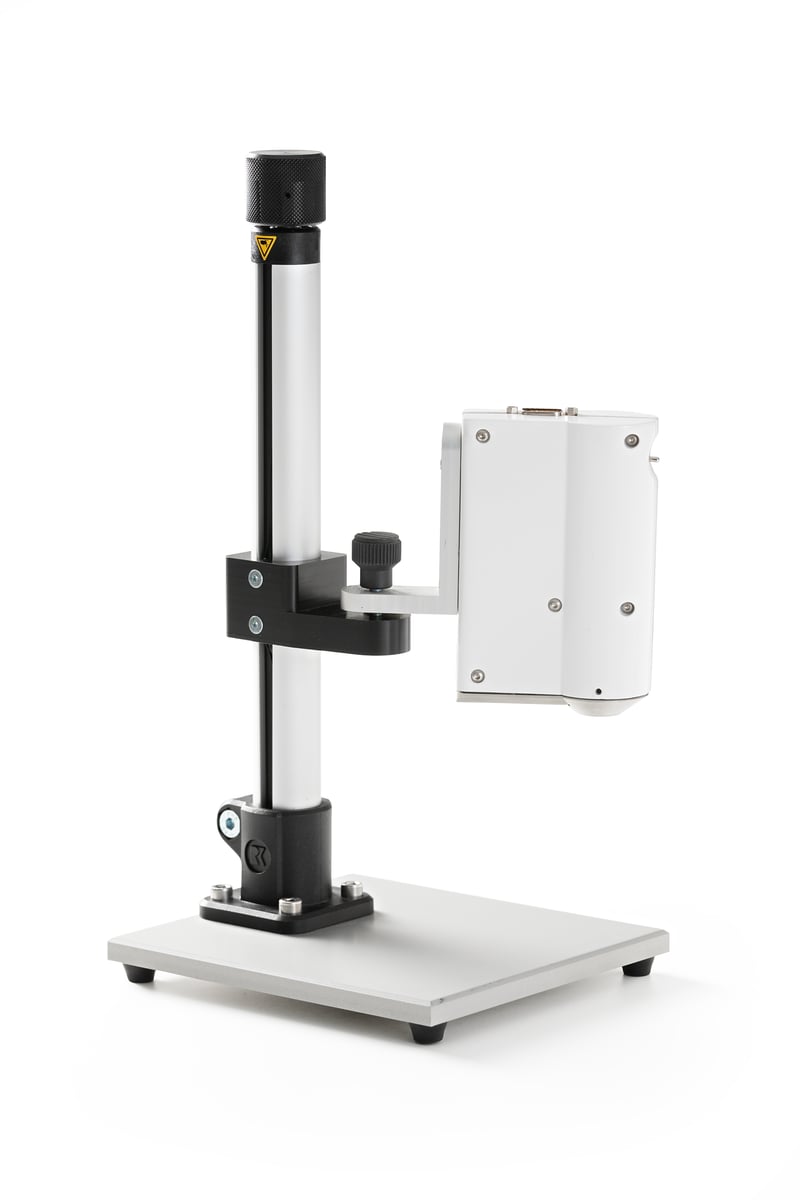- Determine molecular orientation. The SPOT provides information about molecular orientation by observing changes in surface potential and combining the data with surface pressure information.
- In-depth view of Langmuir layer interactions. Surface pressure isotherm alone is unable to separate the reasons for surface pressure changes. Combined with the SPOT, the data gathered from the layer is doubled, giving an in-depth understanding of the layer.
- Determine effective dipole moments. The sensor can be used to determine effective dipole moments through simple surface potential measurements of a compressed film.
- Characterize film electronic structure. Small changes in the electronic structure of molecules can be detected by measuring the change in surface potential.
- Characterize molecular structure. Quantify the effects of changes to molecular structure through positional offsets and peak values of the surface potential plots.
- Monitor complex formation. Observe and follow complex formations between monolayers, sub-phase species or adsorbates.
- Products
- KSV NIMA
- Characterization on Thin Films
- Surface Potential Sensor
Surface Potential Sensor
Get an in-depth view of the Langmuir monolayer interactions with our KSV NIMA Surface Potential Sensor (SPOT).

What you can do
3 reasons to invest
Double the data
Accurate and reproducible measurements
The non-contact and non-destructive vibrating plate capacitor method ensures excellent accuracy and reproducibility.
Easy set up
Would you like to get the full brochure to your inbox?
Product in detail
The KSV NIMA Surface Potential Sensor is used for determining molecular orientation changes in Langmuir films. Together with the surface pressure sensor included in all KSV NIMA Langmuir and Langmuir-Blodgett Troughs, it gives an in-depth view of the Langmuir monolayer interactions.
The instrument measures the potential difference above and below the film and is sensitive to the sum of all the individual dipole moments. The changes in surface potential are measured by detecting the potential difference between the vibrating plate, which is placed above the monolayer, and the counter electrode, which is immersed in the sub-phase below the monolayer.
The sensor allows complementing data from surface pressure—area isotherm measurements obtained from a Langmuir and Langmuir-Blodgett Trough. It allows the determination of monolayer composition, molecular orientation, degree of molecular dissociation and molecular interactions at the interface.
The Surface Potential Sensor is recommended for use with a KSV NIMA Langmuir and Langmuir-Blodgett or Microscopy Trough to enable combined surface pressure and surface potential measurements. The SPOT can also be used with other troughs together with a KSV NIMA Interface unit.
KSV NIMA SPOT Specifications
Measurement |
|
Input range |
-5V to +5V |
Sensitivity |
+/- 1mV |
Height dependency |
10mV/mm |
Response time |
Proportional to distance but less than 1s when positioned 1 mm above monolayer |
Calibration |
Factory calibrated |
Hardware |
|
Measuring head dimension |
100x85x20mm |
Probe diameter |
16mm |
Stand base height |
19mm |
Maximum sensor height |
160mm |
Counter-electrode plate dimensions |
35x50x2mm |
Vertical electrode arm length |
20mm |
